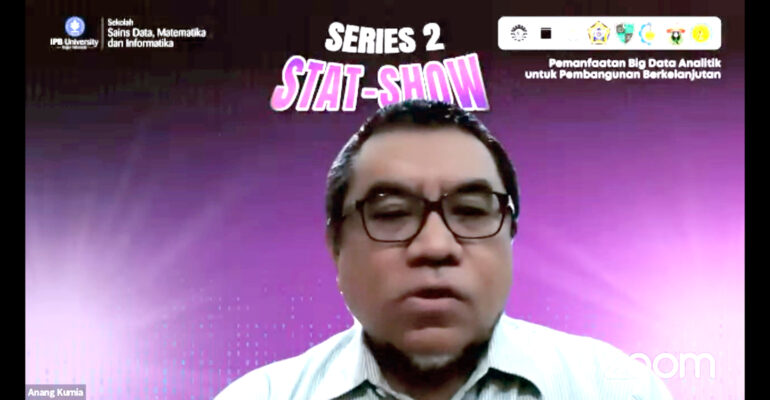IPB University Lecturer Outlines Potential of Big Data and Satellite Imagery to Support Elementary School

In the 2nd STAT-SHOW Statistics and Data Science for Future Solutions series entitled “Utilization of Big Data Analytics for Sustainable Development”, Saturday (02/11), Prof Anang Kurnia, IPB University lecturer from the Department of Statistics, conveyed deep insights into the utilization of big data to support sustainable development.
The collaborative discussion series held by the Department of Statistics of IPB University together with Indonesian universities, Prof Anang provided an understanding of how big data analytics can be applied in the context of measuring Sustainable Development Goals (SDGs) indicators.
“The utilization of big data in the context of SDGs is very important, especially to measure various indicators that number in the hundreds. If we can measure all of them with a good statistical and data science approach, it will be very beneficial for us and our nation,” he explained.
The use of satellite imagery was one of the main points of his presentation. Prof Anang revealed that satellite imagery can be used to support official government statistics, especially in measuring the Human Development Index (HDI) at the sub-district level.
“Expenditure at the sub-district level is very difficult to measure, so we use satellite imagery to illustrate the expenditure,” he explained. With this approach, he said, accurate expenditure data can be obtained without having to conduct time-consuming and costly field surveys.
For the food sector, the use of satellite imagery is also needed. Prof Anang identified the existence of unsynchronized data between related institutions. Therefore, he proposes the use of satellite imagery to combine the sampling frame with economic data, so that costly and time-consuming field surveys can be minimized.
“We utilize satellite imagery for various purposes, such as supporting small area estimation for estimating per capita expenditure in a particular region. We also work on poverty level prediction,” he concluded.
With this presentation, Prof Anang Kurnia showed how big data, especially through the use of satellite imagery, can be a powerful tool to measure and achieve sustainable development. The information obtained can also be more accurate without having to send officers to the field every month. (MW/Rz) (IAAS/NAU)



